Abstract
1 The effects of adenyl compounds were examined on the rat atrium and ventricle. 2 Adenosine, adenosine 5'-monophosphate, adenosine 5'-diphosphate, adenosine 5'-triphosphate (ATP) and beta, gamma-methylene ATP (APPCP) produced negative inotropic effects on the rat atrium. These inhibitory effects were antagonized by 8-phenyltheophylline (8-PT), a P1-purinoceptor antagonist, and potentiated by erythro-9-(2-hydroxy-3-nonyl) adenine (EHNA), an adenosine deaminase inhibitor, but were not affected by dipyridamole, which blocks adenosine uptake. 3 alpha, beta-Methylene ATP (APCPP), which is resistant to degradation, did not produce a similar inhibitory response in the rat atrium. 4 Adenosine did not affect the basal developed force of the rat ventricle nor did it affect the beta-adrenoceptor-mediated positive inotropic effect. 5 Very high concentrations of ATP (0.1-3 mM) produced negative inotropic effects in the rat ventricle. APPCP (0.3 mM) also produced an inhibitory response, which was significantly smaller than that produced by ATP (0.3 mM). APCPP elicited excitation rather than the expected inhibitory response. 6 The inhibitory effect of ATP in the rat ventricle was not blocked by indomethacin, 8-PT or atropine. 7 It is possible that the action of ATP in the rat ventricle is mediated via P2-purinoceptors and that the lack of inhibitory action of APCPP on the rat ventricle is due to the difference in structural conformation between ATP and APCPP. 8 It seems likely that inhibitory P1-purinoceptors are present in the rat atrium and that the inhibitory responses produced by ATP in the rat ventricle may be mediated via P2-purinoceptors.
Full text
PDF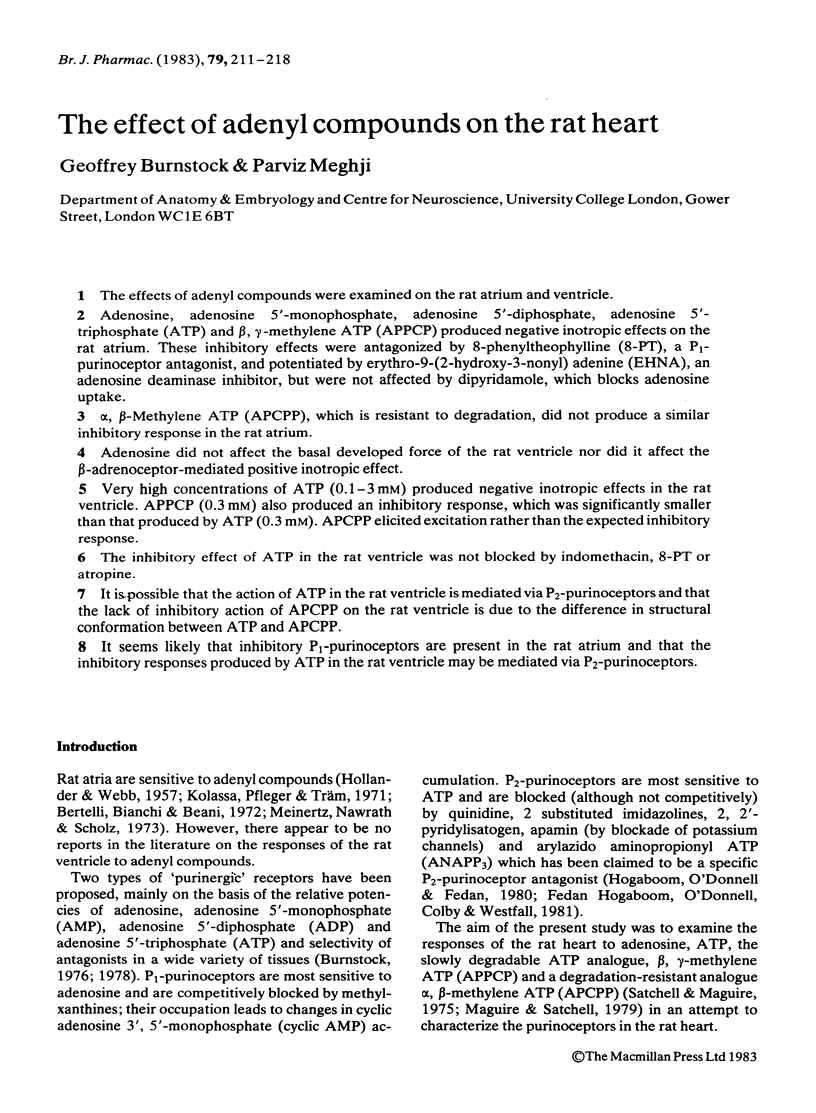
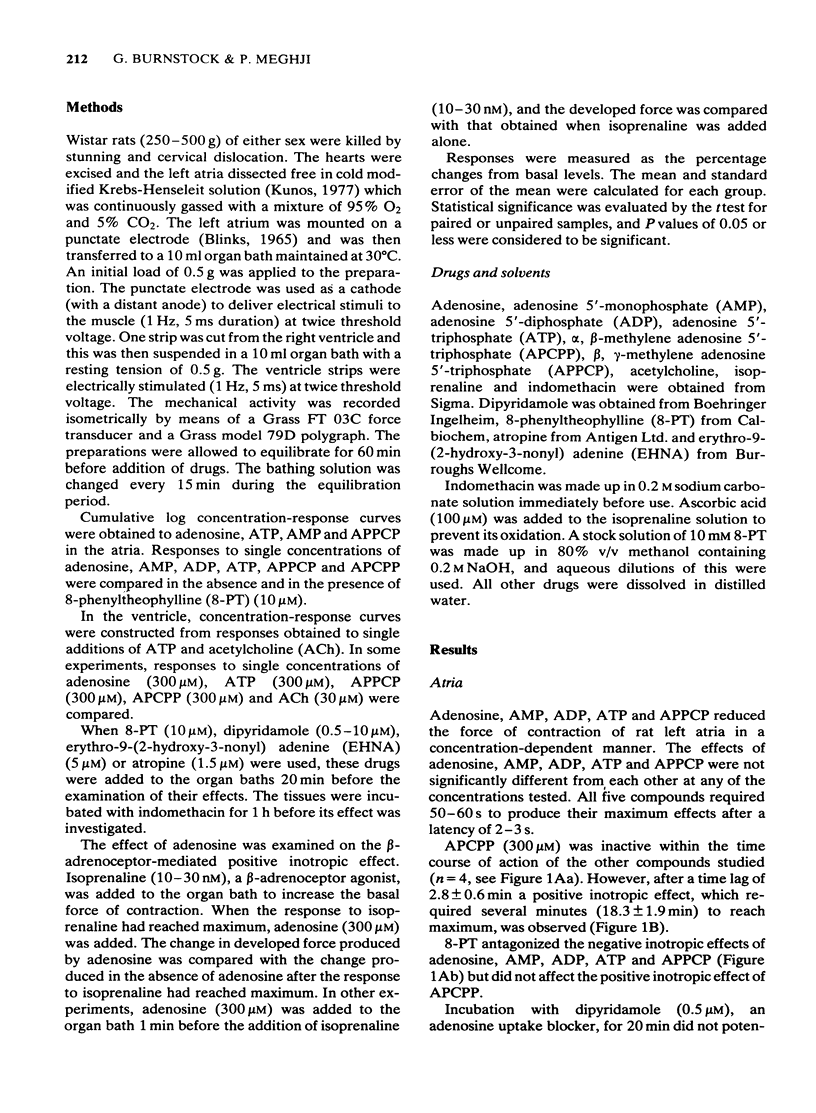
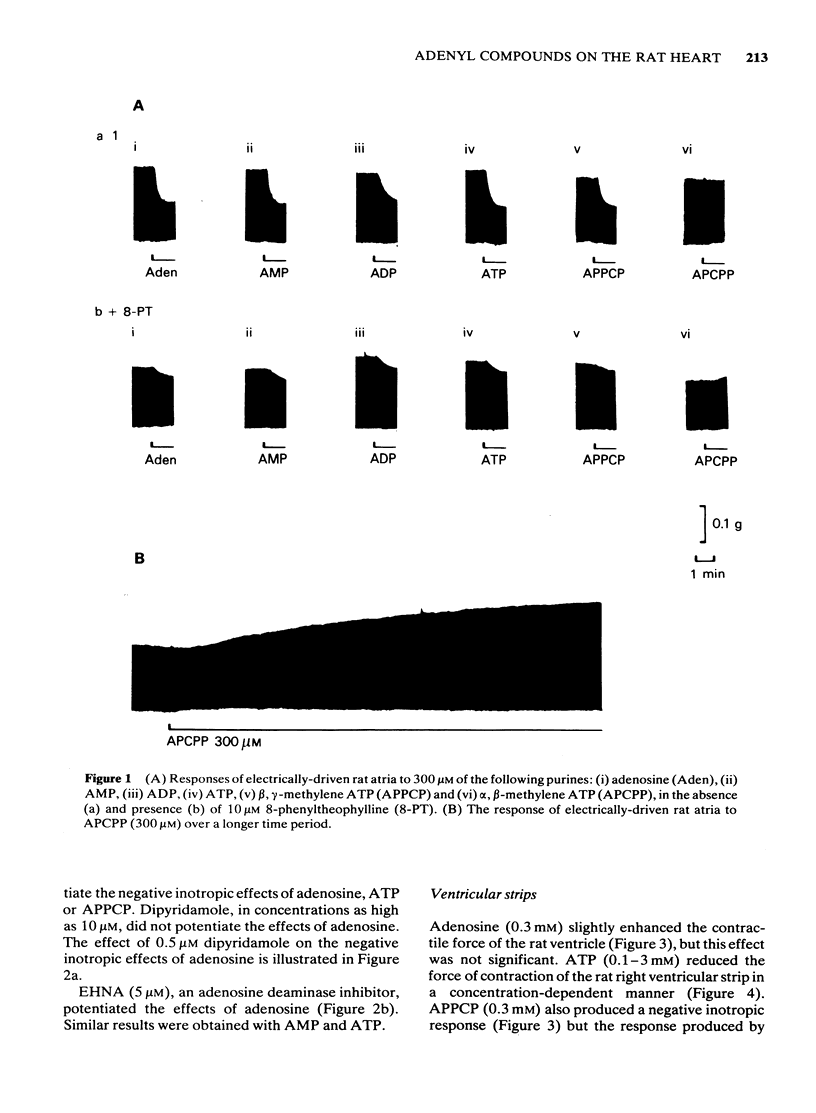
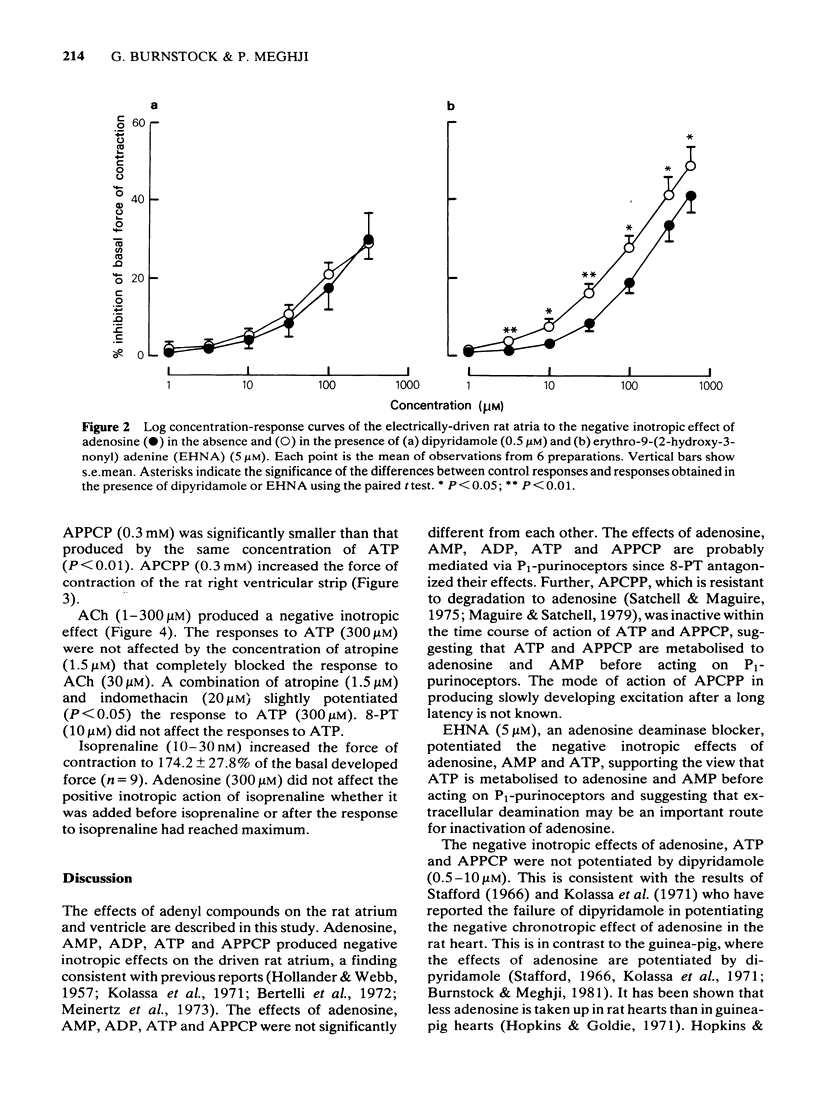

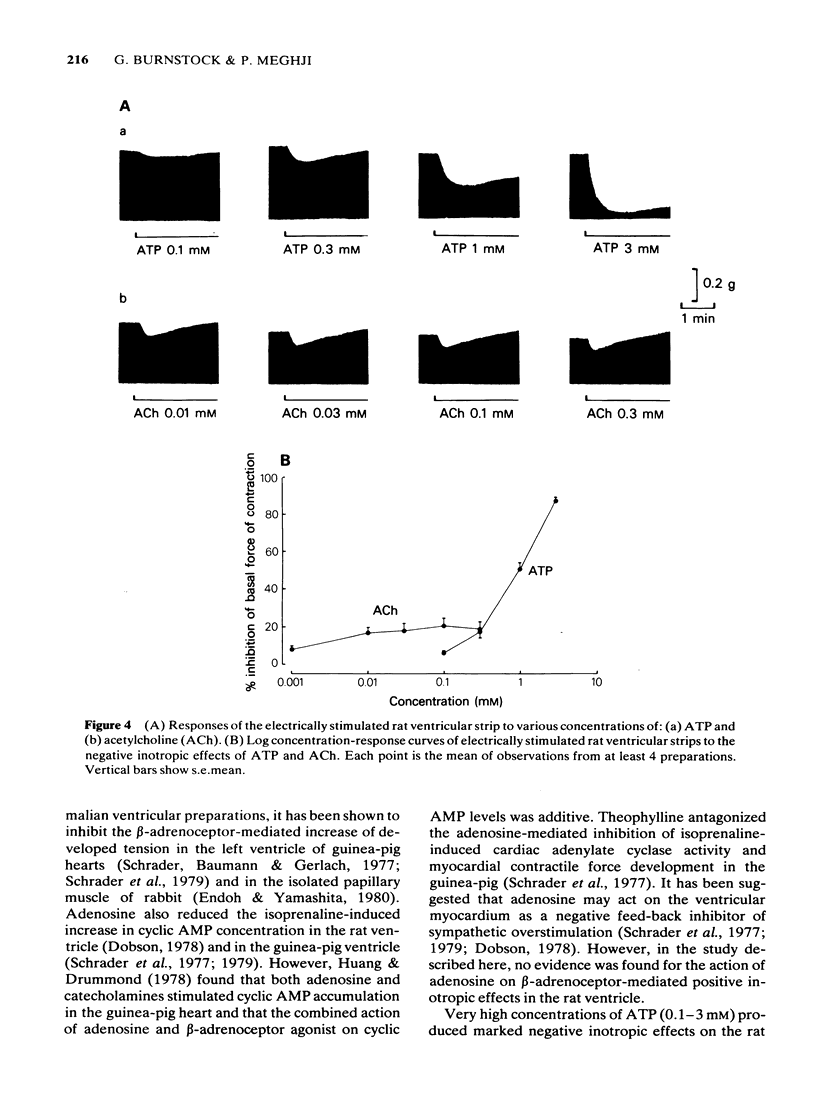
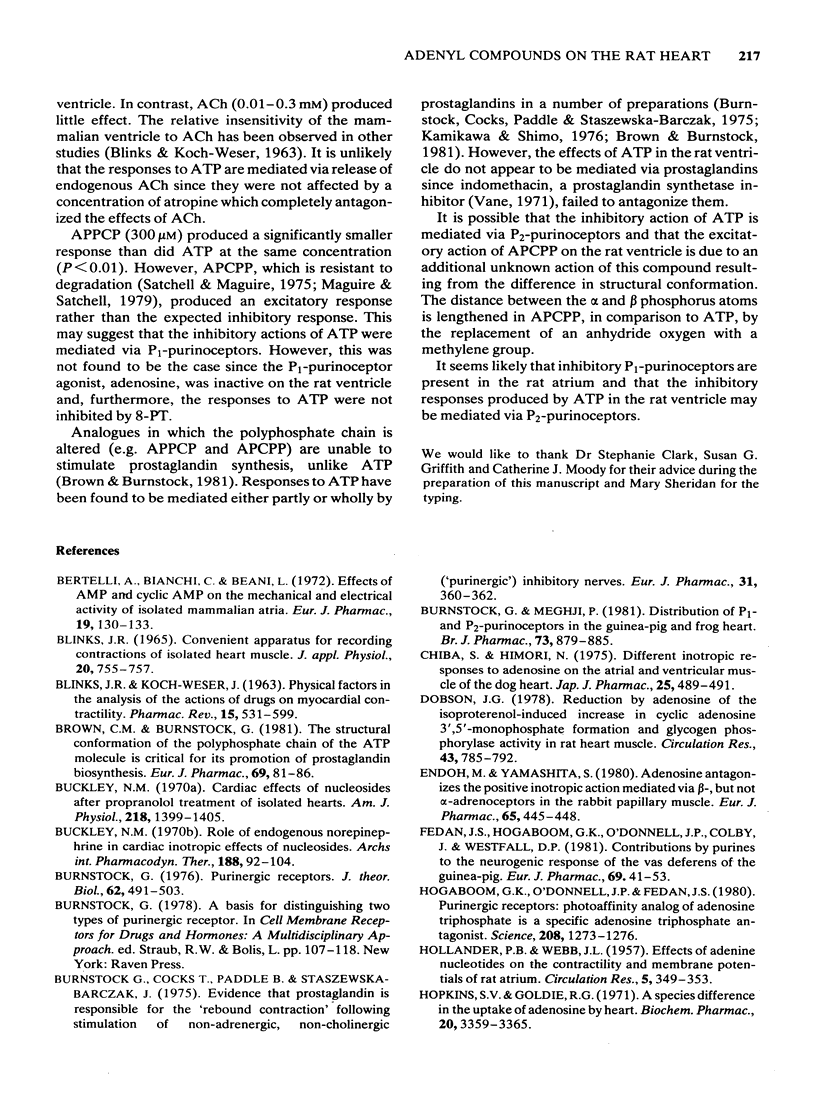
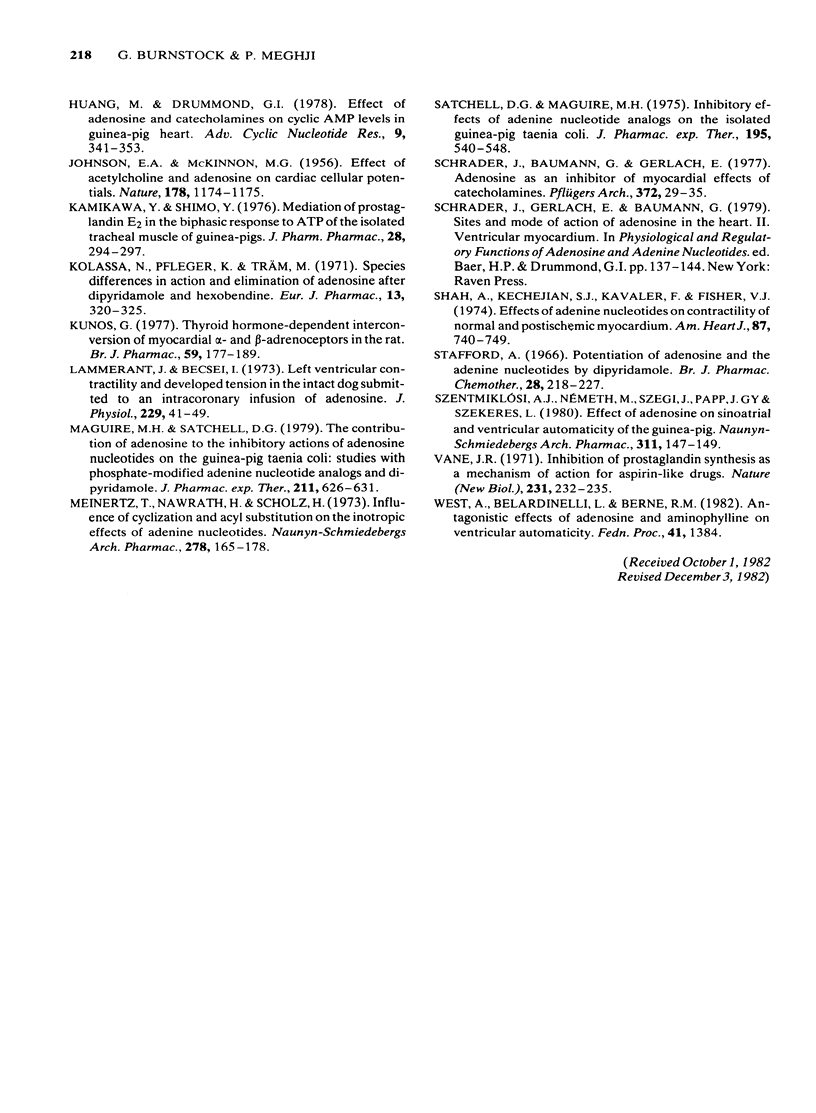
Selected References
These references are in PubMed. This may not be the complete list of references from this article.
- BLINKS J. R., KOCH-WESER J. PHYSICAL FACTORS IN THE ANALYSIS OF THE ACTIONS OF DRUGS ON MYOCARDIAL CONTRACTILITY. Pharmacol Rev. 1963 Sep;15:531–599. [PubMed] [Google Scholar]
- Bertelli A., Bianchi C., Beani L. Effects of AMP and cyclic AMP on the mechanical and electrical activity of isolated mammalian atria. Eur J Pharmacol. 1972 Jul;19(1):130–133. doi: 10.1016/0014-2999(72)90089-1. [DOI] [PubMed] [Google Scholar]
- Blinks J. R. Convenient apparatus for recording contractions of isolated heart muscle. J Appl Physiol. 1965 Jul;20(4):755–757. doi: 10.1152/jappl.1965.20.4.755. [DOI] [PubMed] [Google Scholar]
- Brown C. M., Burnstock G. The structural conformation of the polyphosphate chain of the ATP molecule is critical for its promotion of prostaglandin biosynthesis. Eur J Pharmacol. 1981 Jan 5;69(1):81–86. doi: 10.1016/0014-2999(81)90604-x. [DOI] [PubMed] [Google Scholar]
- Buckley N. M. Cardiac effects of nucleosides after propranolol treatment of isolated hearts. Am J Physiol. 1970 May;218(5):1399–1405. doi: 10.1152/ajplegacy.1970.218.5.1399. [DOI] [PubMed] [Google Scholar]
- Buckley N. M. Role of endogenous norepinephrine in cardiac inotropic effects of nucleosides. Arch Int Pharmacodyn Ther. 1970 Nov;188(1):92–104. [PubMed] [Google Scholar]
- Burnstock G., Cocks T., Paddle B., Staszewska-Barczak J. Evidence that prostaglandin is responsible for the 'rebound contraction' following stimulation of non-adrenergic, non-cholinergic ('purinergic') inhibitory nerves. Eur J Pharmacol. 1975 Apr;31(2):360–362. doi: 10.1016/0014-2999(75)90060-6. [DOI] [PubMed] [Google Scholar]
- Burnstock G., Meghji P. Distribution of P1- and P2-purinoceptors in the guinea-pig and frog heart. Br J Pharmacol. 1981 Aug;73(4):879–885. doi: 10.1111/j.1476-5381.1981.tb08741.x. [DOI] [PMC free article] [PubMed] [Google Scholar]
- Burnstock G. Purinergic receptors. J Theor Biol. 1976 Oct 21;62(2):491–503. doi: 10.1016/0022-5193(76)90133-8. [DOI] [PubMed] [Google Scholar]
- Chiba S., Himori N. Different inotropic responses to adenosine on the atrial and ventricular muscle of the dog heart. Jpn J Pharmacol. 1975 Aug;25(4):489–491. doi: 10.1254/jjp.25.489. [DOI] [PubMed] [Google Scholar]
- Dobson J. G., Jr Reduction by adenosine of the isoproterenol-induced increase in cyclic adenosine 3',5'-monophosphate formation and glycogen phosphorylase activity in rat heart muscle. Circ Res. 1978 Nov;43(5):785–792. doi: 10.1161/01.res.43.5.785. [DOI] [PubMed] [Google Scholar]
- Endoh M., Yamashita S. Adenosine antagonizes the positive inotropic action mediated via beta-, but not alpha-adrenoceptors in the rabbit papillary muscle. Eur J Pharmacol. 1980 Aug 8;65(4):445–448. doi: 10.1016/0014-2999(80)90352-0. [DOI] [PubMed] [Google Scholar]
- Fedan J. S., Hogaboom G. K., O'Donnell J. P., Colby J., Westfall D. P. Contribution by purines to the neurogenic response of the vas deferens of the guinea pig. Eur J Pharmacol. 1981 Jan 5;69(1):41–53. doi: 10.1016/0014-2999(81)90600-2. [DOI] [PubMed] [Google Scholar]
- HOLLANDER P. B., WEBB J. L. Effects of adenine nucleotides on the contractility and membrane potentials of rat atrium. Circ Res. 1957 Jul;5(4):349–353. doi: 10.1161/01.res.5.4.349. [DOI] [PubMed] [Google Scholar]
- Hogaboom G. K., O'Donnell J. P., Fedan J. S. Purinergic receptors: photoaffinity analog of adenosine triphosphate is a specific adenosine triphosphate antagonist. Science. 1980 Jun 13;208(4449):1273–1276. doi: 10.1126/science.6103581. [DOI] [PubMed] [Google Scholar]
- Hopkins S. V., Goldie R. G. A species difference in the uptake of adenosine by heart. Biochem Pharmacol. 1971 Dec;20(12):3359–3365. doi: 10.1016/0006-2952(71)90440-0. [DOI] [PubMed] [Google Scholar]
- Huang M., Drummond G. I. Effect of adenosine and catecholamines on cyclic AMP levels in guinea pig heart. Adv Cyclic Nucleotide Res. 1978;9:341–353. [PubMed] [Google Scholar]
- JOHNSON E. A., MCKINNON M. G. Effect of acetylcholine and adenosine on cardiac cellular potentials. Nature. 1956 Nov 24;178(4543):1174–1175. doi: 10.1038/1781174a0. [DOI] [PubMed] [Google Scholar]
- Kamikawa Y., Shimo Y. Mediation of prostaglandin E2 in the biphasic response to ATP of the isolated tracheal muscle of guinea-pigs. J Pharm Pharmacol. 1976 Apr;28(4):294–297. doi: 10.1111/j.2042-7158.1976.tb04156.x. [DOI] [PubMed] [Google Scholar]
- Kolassa N., Pfleger K., Träm M. Species differences in action and elimination of adenosine after dipyridamole and hexobendine. Eur J Pharmacol. 1971;13(3):320–325. doi: 10.1016/0014-2999(71)90221-4. [DOI] [PubMed] [Google Scholar]
- Kunos G. Thyroid hormone-dependent interconversion of myocardial alpha- and beta-adrenoceptors in the rat. Br J Pharmacol. 1977 Jan;59(1):177–189. doi: 10.1111/j.1476-5381.1977.tb06992.x. [DOI] [PMC free article] [PubMed] [Google Scholar]
- Lammerant J., Becsei I. Left ventricular contractility and developed tension in the intact dog submitted to an intracoronary infusion of adenosine. J Physiol. 1973 Feb;229(1):41–49. doi: 10.1113/jphysiol.1973.sp010125. [DOI] [PMC free article] [PubMed] [Google Scholar]
- Maguire M. H., Satchell D. G. The contribution of adenosine to the inhibitory actions of adenine nucleotides on the guinea-pig taenia coli: studies with phosphate-modified adenine nucleotide analogs and dipyridamole. J Pharmacol Exp Ther. 1979 Dec;211(3):626–631. [PubMed] [Google Scholar]
- Meinertz T., Nawrath H., Scholz H. Influence of cyclization and acyl substitution on the inotropic effects of adenine nucleotides. Naunyn Schmiedebergs Arch Pharmacol. 1973;278(2):165–178. doi: 10.1007/BF00500648. [DOI] [PubMed] [Google Scholar]
- Satchell D. G., Maguire M. H. Inhibitory effects of adenine nucleotide analogs on the isolated guinea-pig taenia coli. J Pharmacol Exp Ther. 1975 Dec;195(3):540–548. [PubMed] [Google Scholar]
- Shah A., Kechejian S. J., Kavaler F., Fisher V. J. Effects of adenine nucleotides on contractility of normal and postischemic myocardium. Am Heart J. 1974 Jun;87(6):740–749. doi: 10.1016/0002-8703(74)90420-7. [DOI] [PubMed] [Google Scholar]
- Stafford A. Potentiation of adenosine and the adenine nucleotides by dipyridamole. Br J Pharmacol Chemother. 1966 Nov;28(2):218–227. doi: 10.1111/j.1476-5381.1966.tb01888.x. [DOI] [PMC free article] [PubMed] [Google Scholar]
- Szentmiklósi A. J., Németh M., Szegi J., Papp J. G., Szekeres L. Effect of adenosine on sinoatrial and ventricular automaticity of the guinea pig. Naunyn Schmiedebergs Arch Pharmacol. 1980 Mar;311(2):147–149. doi: 10.1007/BF00510253. [DOI] [PubMed] [Google Scholar]
- Vane J. R. Inhibition of prostaglandin synthesis as a mechanism of action for aspirin-like drugs. Nat New Biol. 1971 Jun 23;231(25):232–235. doi: 10.1038/newbio231232a0. [DOI] [PubMed] [Google Scholar]


